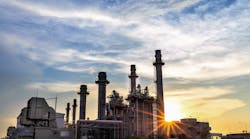Following through on a January 2011 commitment, the U.S. Environmental Protection Agency (EPA) is proposing to defer, for three years, Clean Air Act permitting requirements for carbon dioxide (CO2) emissions from bioenergy and other biogenic sources. According to the EPA, this additional time will allow it to conduct a detailed examination of the science on this issue.
New EPA guidance is also being provided to help permitting authorities determine that using biomass as a fuel can be considered the best available control technology for CO2 emissions from the large sources needing permits. The guidance can be used until the EPA takes final action on the deferral.
Sources covered by this proposal would include facilities that emit CO2 from burning forest or agricultural products for energy, wastewater treatment, waste management (landfills), and fermentation processes for ethanol production. Facilities meeting the requirements under the agency’s greenhouse gas (GHG) reporting program will still need to report their CO2 emissions.
Beginning on January 2, 2011, the Clean Air Act required large plants and factories planning to make major modifications or build new facilities to obtain pre-construction permits addressing their GHG emissions. Emissions from small sources, such as farms and restaurants, are not covered by these permitting requirements.
The EPA will accept comments on the proposed deferral for 45 days following publication in the Federal Register. For more information, visit www.epa.gov/nsr.

